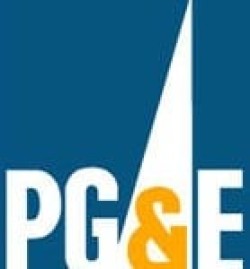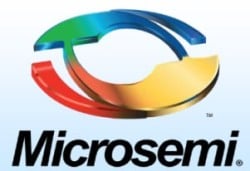Generation Z, the leading edge of young people born after 1997, are now 21 years old. Many of them are graduating from college and listening to the well wishes and advice of graduation speakers. After the microphones are silenced and the last diploma is awarded, Gen Z will enter the workforce.
Today&a;rsquo;s workplace is undergoing an unprecedented rate of change placing new demands on workers of all ages. A new &l;em&g;high velocity workplace&l;/em&g; is emerging &a;ndash; a world of work characterized by the rapid development of new knowledge, an accelerating rate of industry disruption and advancing technology.
Graduation speakers are asking students &l;em&g;to be daring&l;/em&g;, &l;em&g;to hone personal resilience&l;/em&g; and more. My personal favorite is a &l;a href=&q;https://www.npr.org/2018/05/25/614518550/from-oprah-to-rex-tillerson-commencement-speeches-for-the-class-of-2018&q; target=&q;_blank&q;&g;speech&l;/a&g;, a mixture of practical and aspirational guidance, delivered by Oprah Winfrey to University of Southern California graduates. She advised the class of 2018 to &a;ldquo;eat breakfast&a;hellip;make your bed&a;hellip;recycle&a;hellip;pay your bills on time&a;hellip;and to aim high.&a;rdquo;
But, in the &l;a href=&q;https://www.azlyrics.com/lyrics/billyjoel/preludeangryyoungman.html&q; target=&q;_blank&q;&g;words&l;/a&g; of another Baby Boomer, Billy Joel, not from a podium, but in song, sometimes &a;ldquo;just surviving is a noble fight.&a;rdquo;
Surviving &l;em&g;and thriving&l;/em&g; in the emerging high velocity workplace will require Gen Z graduates to confront the new realities of work &a;ndash; realities that are changing the rules of work for all generations. Here are four.
&l;strong&g;School Is Never Out&l;/strong&g;
Sorry graduates. You thought final exams were&a;hellip;well, &l;em&g;final&l;/em&g;. The half-life of education is perhaps shorter than any previous generation perhaps placing&a;nbsp;Gen Z at a higher risk for professional obsolescence in fewer years than&a;nbsp;even the Millennials.
Buckminster Fuller coined the idea of &l;a href=&q;https://www.bfi.org/search?search_api_views_fulltext=knowledge+doubling+curve&q; target=&q;_blank&q;&g;knowledge doubling&l;/a&g; which suggests that knowledge, in a given field or human endeavor, doubles at a predictable, but accelerating rate. Fuller argued that in 1900 human knowledge doubled about every 100 years and by 1950 knowledge doubled every 25 years. A 2006 IBM &l;a href=&q;http://www-935.ibm.com/services/no/cio/leverage/levinfo_wp_gts_thetoxic.pdf&q; target=&q;_blank&q;&g;study&l;/a&g; forecasted that human knowledge might be doubling every 11 hours! Today it is widely accepted that knowledge doubles, but at different rates in different fields. Medical education provides a startling example. One researcher projects that by 2020 medical knowledge might double every 73 days.
&l;!--nextpage--&g;
&l;img class=&q;dam-image shutterstock size-large wp-image-616235297&q; src=&q;https://specials-images.forbesimg.com/dam/imageserve/616235297/960x0.jpg?fit=scale&q; data-height=&q;619&q; data-width=&q;960&q;&g; Shutterstock
Just when you thought you were done with school, you will be back in the classroom (on campus or online) sooner than you think. Just consider what might be the half-life of computer programming languages that dominate today only to become storied skills tomorrow?
Even for Gen Z, the first generation where the Internet always existed, the accelerating pace of technological advance will soon transform their smart phones and smart speakers into technologies reminiscent of rotary phones and high fidelity stereos. Continuous learning and skills building is no longer the hallmark of the high achiever; it is now the required behavior of the workplace survivor.
&l;strong&g;Industry Destruction &a;amp; Disruption&l;/strong&g;
Political economist &l;a href=&q;https://www.britannica.com/biography/Joseph-Schumpeter&q; target=&q;_blank&q;&g;Joseph Schumpeter&l;/a&g;, wrote about &l;a href=&q;https://www.amazon.com/Capitalism-Socialism-Democracy-Joseph-Schumpeter/dp/1169832121/ref=pd_lpo_sbs_14_t_0?_encoding=UTF8&a;amp;psc=1&a;amp;refRID=QDM0Q3TSZ3ATBCDSK35V&q; target=&q;_blank&q;&g;creative destruction&l;/a&g; long before consultants began muttering about &l;em&g;disruption&l;/em&g;. Schumpeter argued that every business model contains the seeds of its own destruction. Organizations are designed to address the problems and solutions available at the time of their creation. Technology certainly accelerates creative destruction but so do social, political and economic forces &a;ndash; driving some businesses to the top of markets and others into oblivion.
Baby Boomers graduating in 1968 entered a work environment that featured unimaginable technological achievement. Against the backdrop of the first humans to land on the moon, the class of &a;rsquo;68 must have believed that they, and the organizations they worked for, were vanguards of the future. But, few of the companies that were the titans then, are giants today. Some no longer exist.
A comparison of the Fortune 500&a;rsquo;s top 25 companies in &l;a href=&q;http://archive.fortune.com/magazines/fortune/fortune500_archive/full/1968/&q; target=&q;_blank&q;&g;1968&l;/a&g; and &l;a href=&q;http://fortune.com/fortune500/list/&q; target=&q;_blank&q;&g;2018&l;/a&g; shows more than changes in revenues among leading companies, it also reveals the transience of industries that once appeared to offer careers for a lifetime. A job in the petrochemical, steel or telecommunications industries made sense in 1968. For Gen Z, Fortune&a;rsquo;s top 25 in 2018 reflects only five firms from 1968 and a profound change in the mix of leading industries. Today retail, health and financial firms have displaced petrochemical, steel and telecommunications companies that garnered top spots decades earlier.
The class of 2018 is walking off graduation platforms and into 50-plus years of work. Which industries will be transformed? Will transformation occur faster during Gen Z&a;rsquo;s work life than previous generations? Gen Z workers will need to be agile. Many Baby Boomers, and even some Gen X&a;rsquo;ers, committed to one company to &l;em&g;build&l;/em&g; a career. It may no longer be effective career planning to bet decades, let alone five-decades of work, on one or two firms or even industries. Gaining experience and developing skills that apply &l;em&g;across&l;/em&g; industries&a;nbsp;is fast becoming a requirement for&a;nbsp;workers&a;nbsp;to&a;nbsp;successfully navigate five-plus decades of work.
&l;!--nextpage--&g;
&l;img class=&q;dam-image shutterstock size-large wp-image-1058584430&q; src=&q;https://specials-images.forbesimg.com/dam/imageserve/1058584430/960x0.jpg?fit=scale&q; data-height=&q;639&q; data-width=&q;960&q;&g; Shutterstock
&l;strong&g;Yes, The Robots Are Coming&l;/strong&g;
Artificial intelligence, and robotics generally, is changing the workplace. &l;a href=&q;https://hbr.org/2016/10/robots-will-replace-doctors-lawyers-and-other-professionals&q; target=&q;_blank&q;&g;No one is exempt&l;/a&g;. From commercial drivers that will be displaced by the widespread deployment of autonomous vehicles, to physicians who will be second fiddle to an AI diagnostician, every Gen Z professional will need to rapidly adapt to the new human-robot workplace.
Working with robots will not necessarily be a &l;em&g;to be, or not to be&l;/em&g; question for Gen Z workers. But, artificial intelligence will require humans to adapt to new ways of working. Some Gen Z workers will need to learn how to be a robot&a;rsquo;s supervisor, while others may be supervised by a &a;lsquo;bot. Gen Z professionals, such as those in law or financial advice, will have to learn how to partner with AI &a;ndash; not just to excel in their profession, but to simply keep their job. Future annual performance reviews may include how well you work with your human colleagues &l;em&g;and&l;/em&g; how well you collaborate with your robot colleague.
Gen Z graduates have an entire career ahead of them. However, many Baby Boomers, Gen X&a;rsquo;ers and Millennials will be navigating the same rapidly changing workplace for years and decades to come &a;ndash; a future of work that has new unarticulated rules and demands for all workers.&l;/p&g;


 Several analysts have recently updated their ratings and price targets for Stabilus (ETR: STM):
Several analysts have recently updated their ratings and price targets for Stabilus (ETR: STM): News articles about Keysight (NYSE:KEYS) have been trending somewhat positive this week, according to Accern. Accern ranks the sentiment of media coverage by reviewing more than twenty million blog and news sources in real time. Accern ranks coverage of publicly-traded companies on a scale of -1 to 1, with scores closest to one being the most favorable. Keysight earned a daily sentiment score of 0.22 on Accern’s scale. Accern also assigned news articles about the scientific and technical instruments company an impact score of 45.6700267330093 out of 100, indicating that recent media coverage is somewhat unlikely to have an effect on the stock’s share price in the near term.
News articles about Keysight (NYSE:KEYS) have been trending somewhat positive this week, according to Accern. Accern ranks the sentiment of media coverage by reviewing more than twenty million blog and news sources in real time. Accern ranks coverage of publicly-traded companies on a scale of -1 to 1, with scores closest to one being the most favorable. Keysight earned a daily sentiment score of 0.22 on Accern’s scale. Accern also assigned news articles about the scientific and technical instruments company an impact score of 45.6700267330093 out of 100, indicating that recent media coverage is somewhat unlikely to have an effect on the stock’s share price in the near term.  Media coverage about PG&E (NYSE:PCG) has been trending somewhat positive on Saturday, Accern reports. The research firm identifies positive and negative media coverage by analyzing more than 20 million news and blog sources in real-time. Accern ranks coverage of companies on a scale of negative one to positive one, with scores nearest to one being the most favorable. PG&E earned a news sentiment score of 0.20 on Accern’s scale. Accern also gave media stories about the utilities provider an impact score of 46.1218598724786 out of 100, indicating that recent media coverage is somewhat unlikely to have an effect on the stock’s share price in the next few days.
Media coverage about PG&E (NYSE:PCG) has been trending somewhat positive on Saturday, Accern reports. The research firm identifies positive and negative media coverage by analyzing more than 20 million news and blog sources in real-time. Accern ranks coverage of companies on a scale of negative one to positive one, with scores nearest to one being the most favorable. PG&E earned a news sentiment score of 0.20 on Accern’s scale. Accern also gave media stories about the utilities provider an impact score of 46.1218598724786 out of 100, indicating that recent media coverage is somewhat unlikely to have an effect on the stock’s share price in the next few days.  Microsemi (NASDAQ:MSCC) hit a new 52-week high and low during mid-day trading on Thursday . The stock traded as low as $68.63 and last traded at $68.61, with a volume of 245865 shares. The stock had previously closed at $68.56.
Microsemi (NASDAQ:MSCC) hit a new 52-week high and low during mid-day trading on Thursday . The stock traded as low as $68.63 and last traded at $68.61, with a volume of 245865 shares. The stock had previously closed at $68.56.